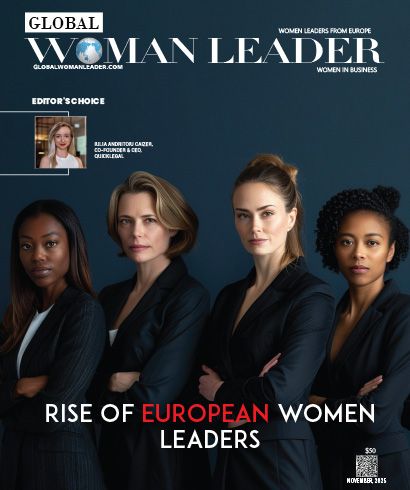Cristina Cestari, a seasoned technology and innovation leader with over three decades of experience in digital transformation, process excellence and people integration, believes that true innovation stems from the harmony of people and processes. She drives responsible growth that balances business success with social and environmental impact.
In an engaging conversation with Global Women Leader magazine, Cristina shares her insights on Volkswagen's digital assistant, Otto. She takes us through the keen details on how Otto redefines in-car intelligence through personalization, cultural identity and generative AI innovation. Christina also reflects on Volkswagen's vision for a connected, human-centric future.
What makes Otto fundamentally different from other in-car assistants we see globally today?
Otto, Volkswagen's digital assistant, differs from other global automotive avatars in some strategic points that go beyond aesthetics and basic interaction. It was conceived not only as a service bot, but as a symbol of identity and innovation of the Volkswagen brand. It has identity and personalization, a real multichannel integration, designed to be present throughout the Volkswagen ecosystem: website, app, dealerships, call center, after-sales and even inside the car, as a future interface channel with the driver.
It is built on generative AI and continuous learning foundations, which allow you to respond in natural language, learn from each interaction and refine responses, and even personalize recommendations (e.g., maintenance, recall, service promotions, connectivity).
How did you approach designing Otto’s personality to reflect companionship in a culturally Brazilian way?
Otto is not a generic avatar: he reflects Volkswagen's identity in South America, with an interface designed to be friendly, reliable and technological at the same time.
Unlike other automotive avatars that look like "standardized voice assistants", Otto has his own personality – close, clear and adapted to the Brazilian/Latin audience, respecting nuances of language and culture.
Inspired by the Kombi Corujinha, a Volkswagen icon in the Latin and global market, it makes the connection between the driver and the brand increase even more.
What were the key hurdles in building a generative AI like Otto, especially around its data and technical architecture?
The biggest challenge was balancing disruptive innovation, curation, and data security for our products and deadlines. No one had developed anything like Otto before, adding several components to give "life" to the avatar. Natural language, voice, languages, VW product data curation and very low latency in responses were the main challenges in this architecture. In addition, for it to really be an assistant, it needs to connect to various external "services" and the internet.
In what ways does Otto personalize itself over time based on user behavior and voice interactions?
OTTO works with mathematical models trained on large volumes of data, capable of identifying patterns, learning and generating responses.
Personalization occurs because AI continuously learns from user interactions, adjusting to behaviors, choices, and preferences, as if forming a "dynamic profile."
In the case of generative AI, this process is even more sophisticated: through voice interactions, it captures tone, cadence, and intent, making the dialogue more natural. Over time, it adapts vocabulary, style, and solutions to the history and context, evolving along with the user.
Do you envision Otto eventually connecting with external ecosystems like smart homes or wearable devices?
As it is a generative artificial intelligence, OTTO naturally opens up many possibilities for connecting with different ecosystems. This is precisely the great value of this technology: the ability to adapt, learn, and integrate into different contexts, expanding the impact beyond what we imagine today. It is already born inside an app, that is, it is already in a certain way "wearable". Whether it's in smart homes, wearable devices, or other environments, the potential is huge. But the most interesting thing is that we are only at the beginning of this journey. There is still a lot to explore.
Is Otto intended to remain a Volkswagen-exclusive AI, or could it evolve into a platform for the wider automotive industry?
OTTO was born within Volkswagen to meet the needs of our customers and reflect our vision of the future. It is a strategic asset of the brand in our region and its purpose is to generate value by being a companion, understanding and anticipating the needs of our customers inside and outside the car. He is the voice of Volkswagen, today and in the future of mobility.
🍪 Do you like Cookies?
We use cookies to ensure you get the best experience on our website. Read more...
Copyright © All rights reserved. Global Woman Leader

.png)
